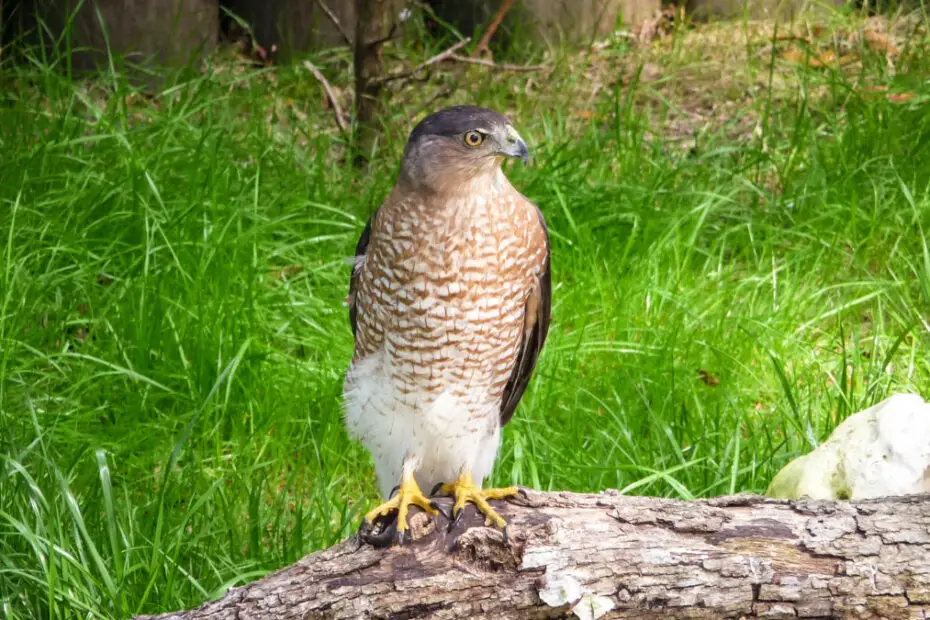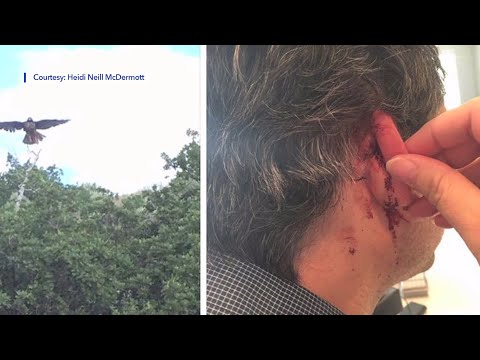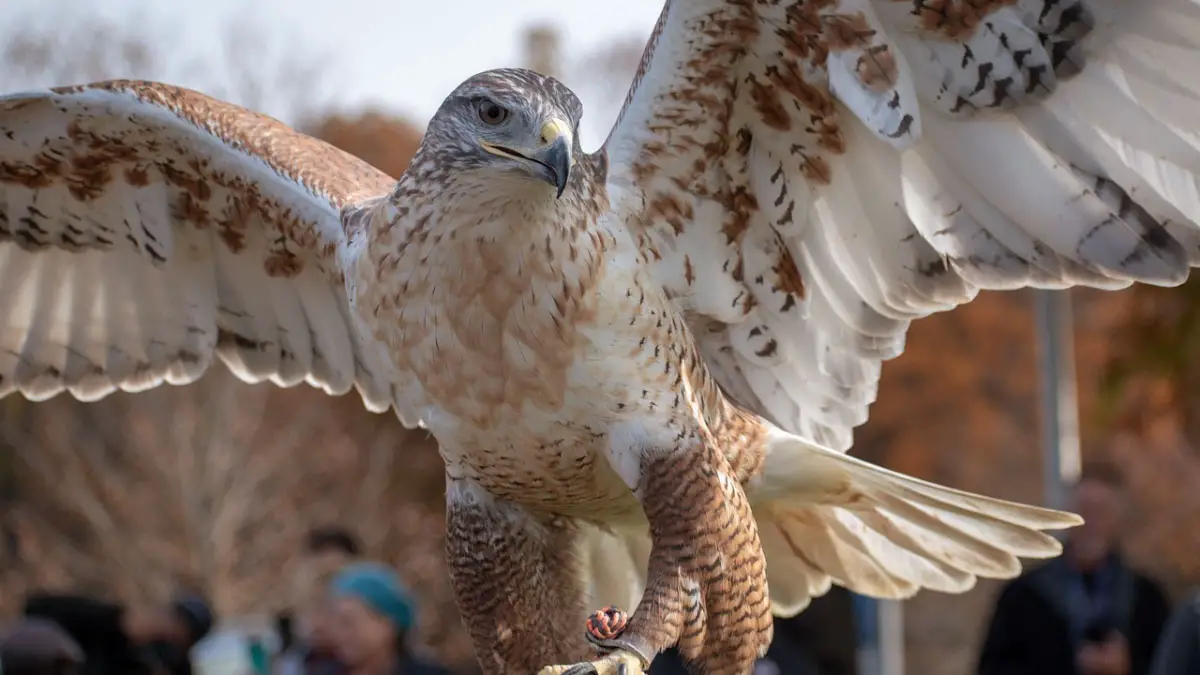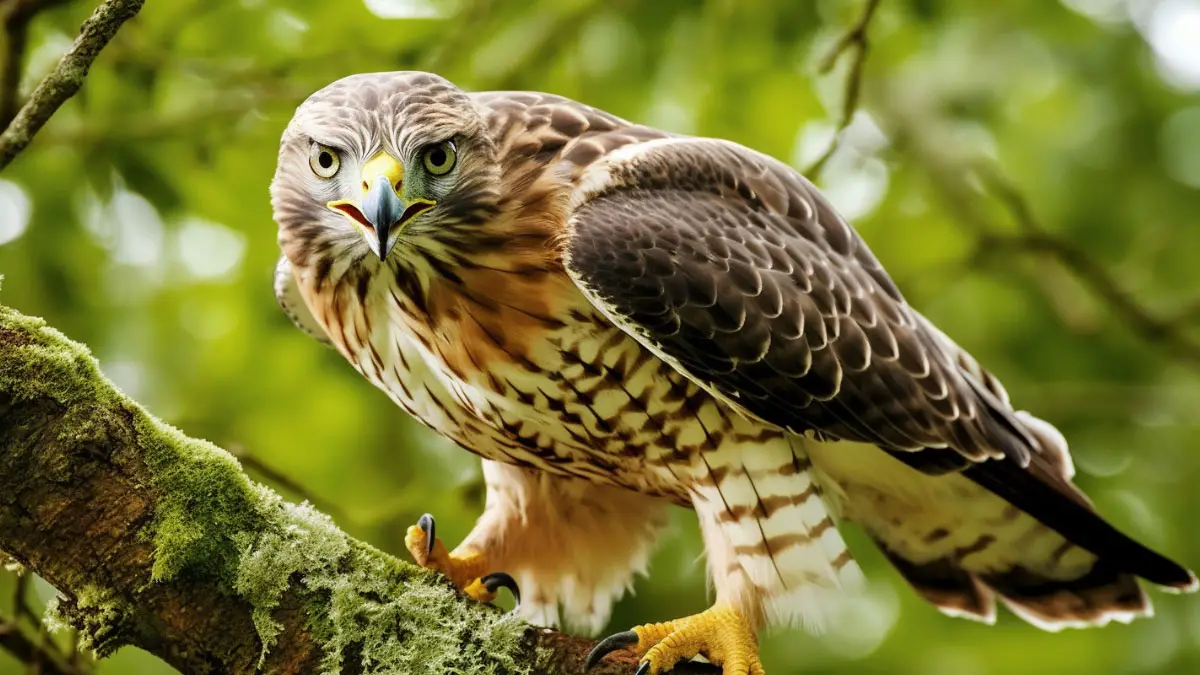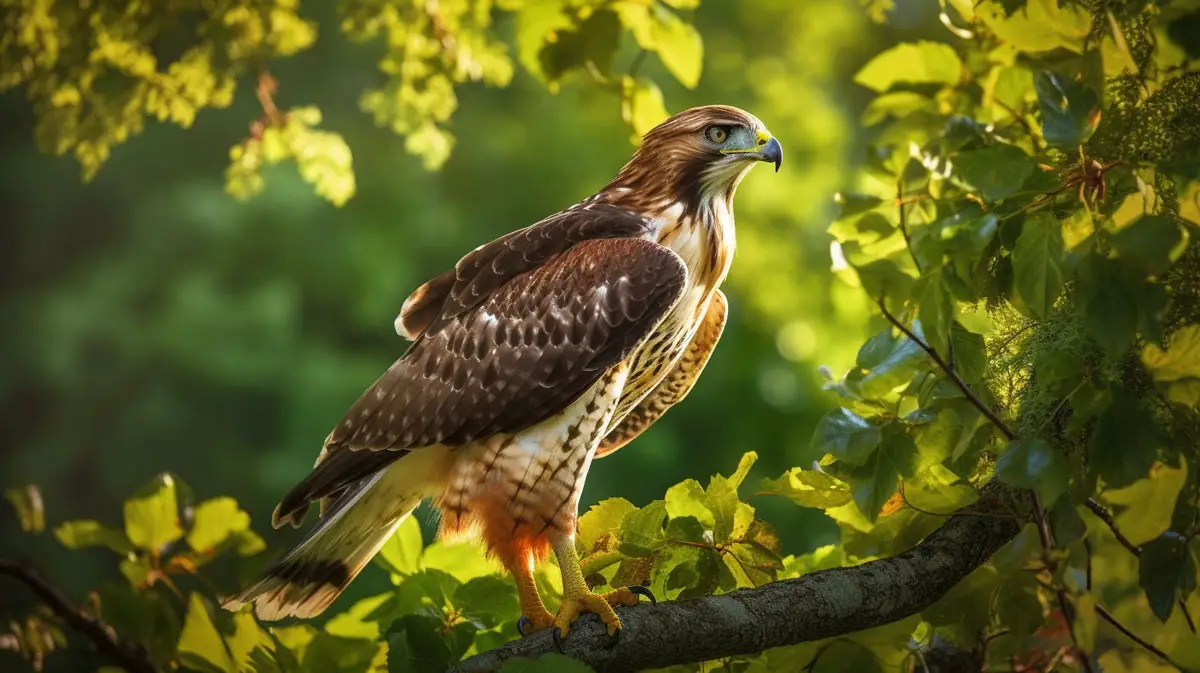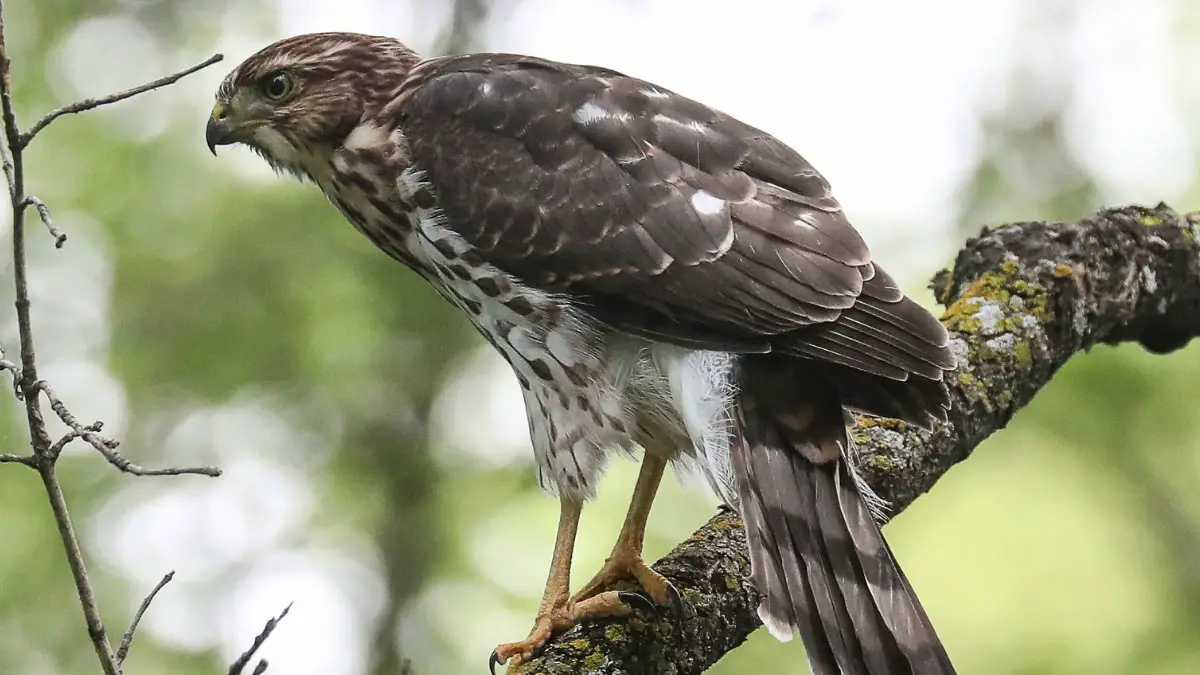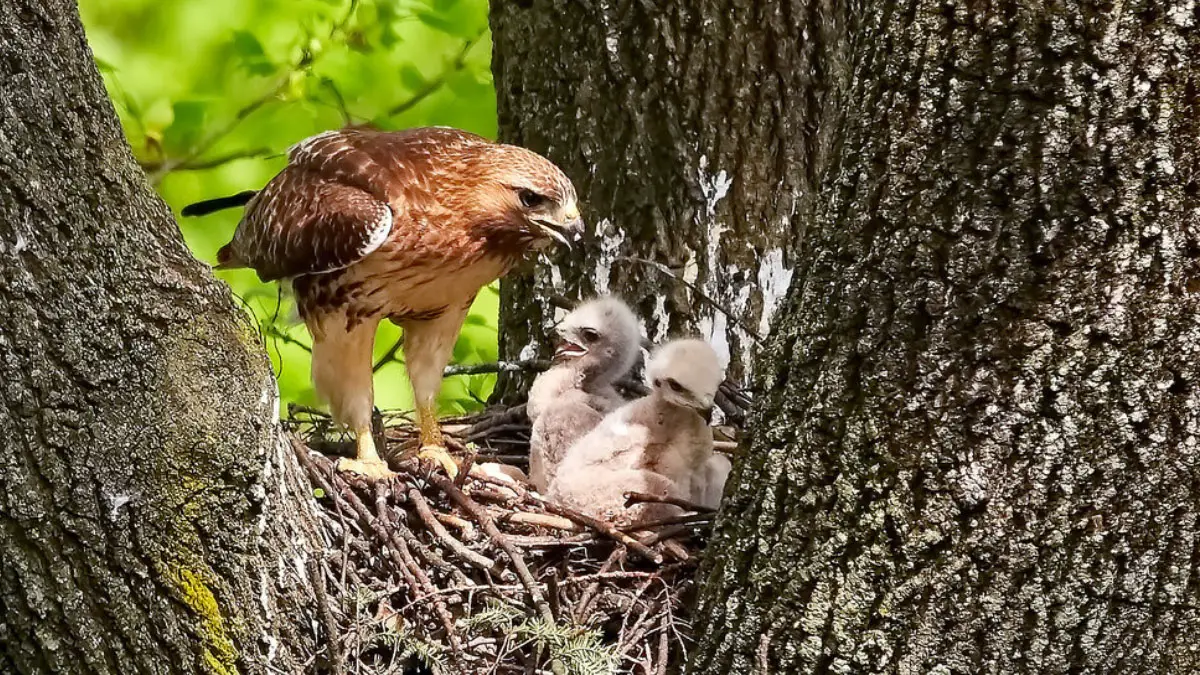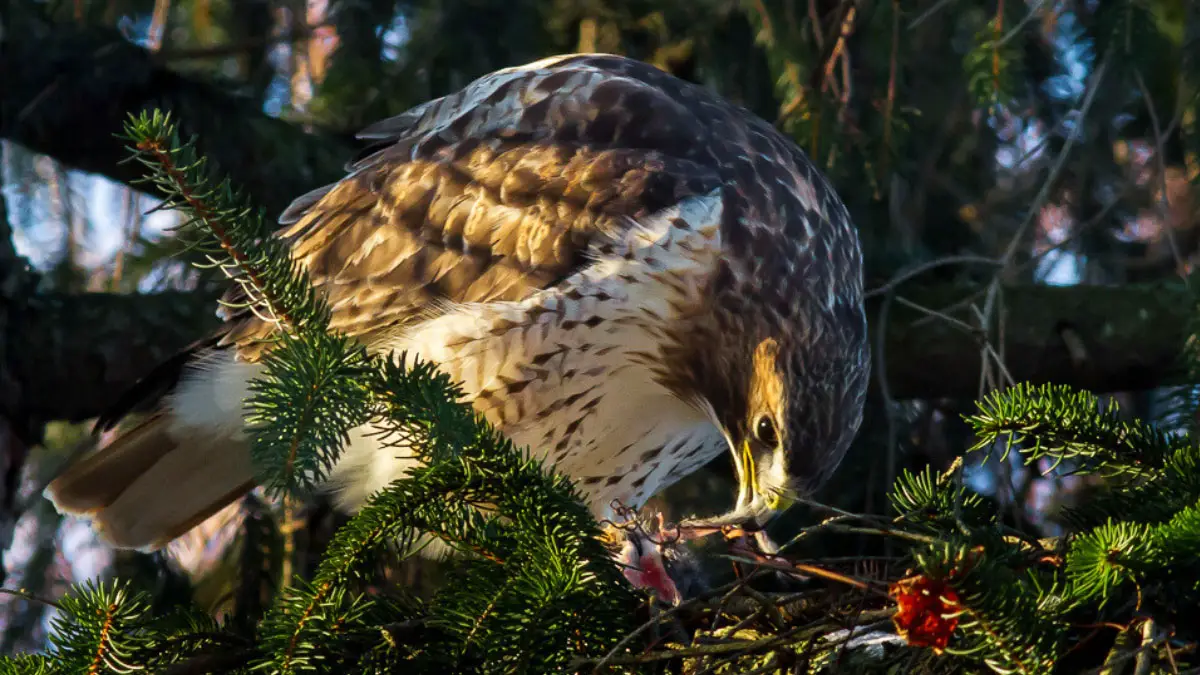If you’ve ever wondered whether Hawks are dangerous to humans, you’re not alone. Hawks are birds of prey in the Accipitridae family. They are recognized for their formidable physique, which they utilize to hunt and capture their prey. While these birds are known for their grace and power, they can be intimidating to people that come into contact with them.
Therefore, are hawks aggressive toward humans? Hawks pose little danger to humans. Hawks are more likely to be afraid of humans and will avoid contact if possible. However, humans may inadvertently provoke a hawk when approaching a nest or interfering with hunting activities. In such a case, the hawk will attack you to scare you away from its nest.
You can coexist safely with these magnificent creatures if you understand their behavior and take the necessary precautions. This article will look at hawk behavior and provide tips on staying safe in areas where these birds are present. We’ll review everything from understanding hawk behavior patterns to what to do if you encounter one.
Are Hawks Dangerous To Humans?
Hawks are not generally dangerous to humans; it is critical to understand their behavior and take precautions in areas frequented by these birds. They are known for their keen vision; they usually try to avoid them when they spot a human.
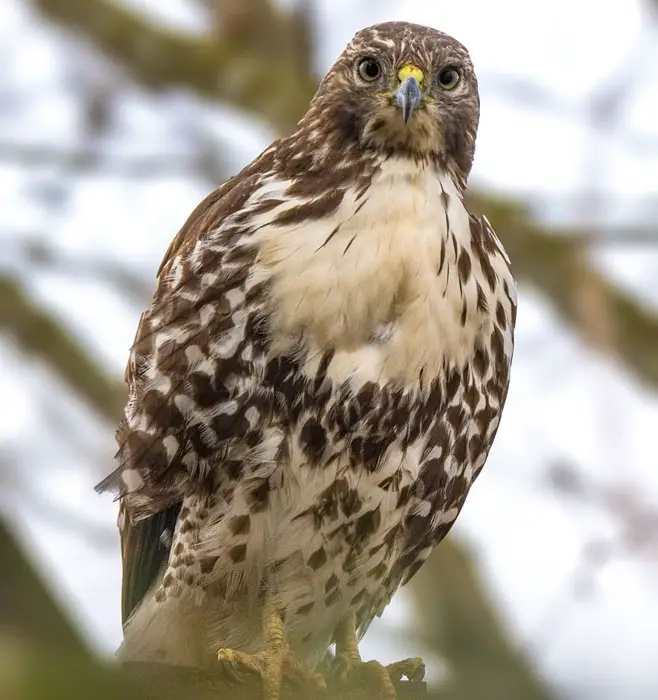
Conversely, Hawks can become aggressive if they feel threatened or if their nesting sites are disturbed. This is because hawks can be very territorial and protective of their young.
Factors That May Cause Hawks To Attack Humans
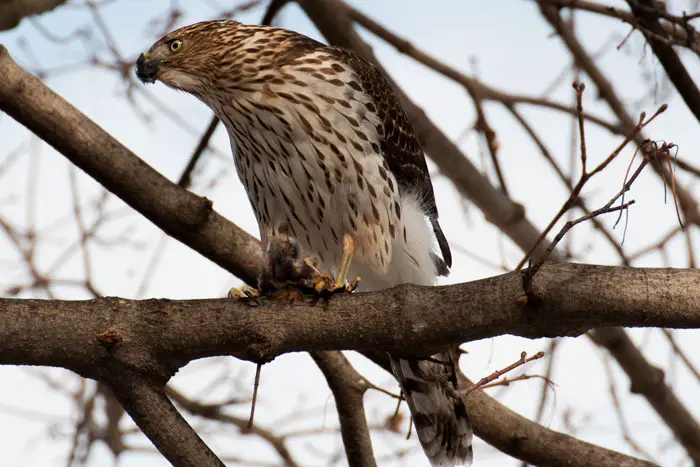
Different factors impact the Hawks’ behavior to become aggressive toward humans. They include the following.
- Nest protection: Hawks protect their nests and may become aggressive toward humans who get too close. If you accidentally stumble upon a hawk’s nest, it may perceive you as a threat and attack to protect its young.
- Provocation: Hawks may also attack humans if they feel threatened or provoked. For example, if you throw objects at a hawk or try to capture it, it may perceive you as a threat and attack in self-defense.
- Territory protection: Hawks have very territorial behavior and vigorously defend their nesting sites. If they believe their young or eggs are in danger, they will attack anything they perceive as a threat, including humans.
- Human encroachment: As human development expands into natural habitats, hawks and other wildlife may be forced closer to people. This can lead to increased interactions and potential conflicts between humans and hawks.
- Hunger: Another factor contributing to a hawk attack is if the bird is hungry or searching for food. If a hawk is hunting and sees a human carrying food, it may view the human as a potential food source and attack to obtain it.
In some cases, hawks may mistake shiny objects, such as jewelry or cell phones, for prey and attempt to capture them.
There have been a few documented instances of hawks attacking humans. One occurred in Illinois in 2001, and the other in England and Utah. Nobody was killed.
As a result, it is safe to say that hawk attacks on humans are uncommon and usually occur only when the bird feels threatened or desperately needs food. Here is a video showing the Hawk attack in Utah.
Common Situations In Which Humans May Encounter Hawks
Humans frequently encounter hawks while participating in outdoor activities such as hiking or bird watching. These birds prefer open areas with good vantage points, popular with humans who enjoy outdoor activities.
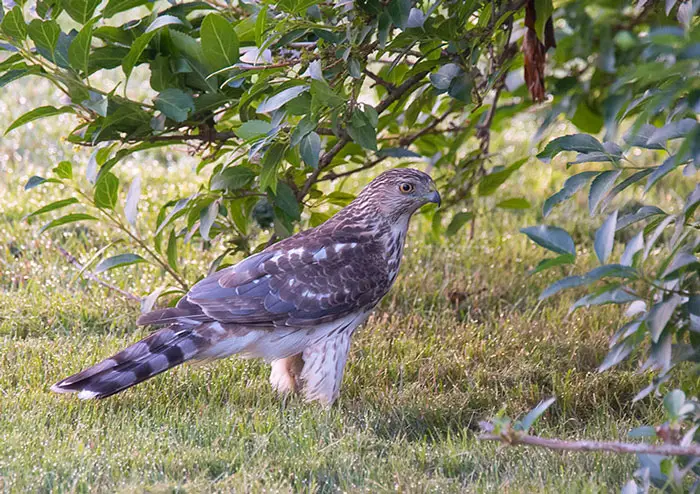
Hawks can also be found near residential areas, especially if open space is nearby, such as a park or golf course. They may perch on trees or telephone poles, searching for prey, and occasionally swoop down to catch a meal.
In addition, some species of hawks are known to be frequent visitors to backyard bird feeders. These hawks have learned to take advantage of the abundance of small birds around the feeders. If humans are present when a hawk swoops down to catch a bird, they may be surprised or alarmed by the sudden movement.
Risks Of Being Attacked By A Hawk
While hawk attacks on humans are relatively rare, some risks are still associated with encountering these birds of prey.
- Risk of Injury: One of the most significant risks of a hawk attack is the potential for injury. Hawks have sharp talons and beaks to catch and kill their prey.
While most hawk attacks result in minor injuries, such as scratches or puncture wounds, more severe injuries can occur if the hawk targets a sensitive area, such as the eyes or face.
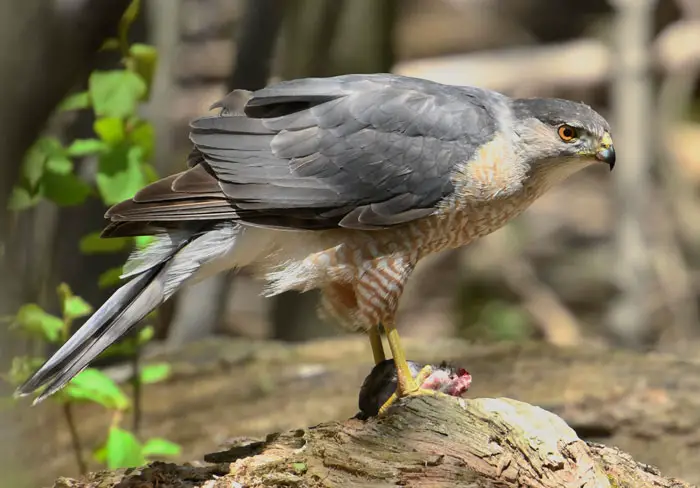
- Risk of Infection: Another risk of being attacked by a hawk is the potential for infection. Like all birds of prey, Hawks have sharp talons and beaks coated in bacteria.
If a hawk were to scratch or bite a human, there is a risk of infection from the bacteria on its talons or beak. Hawks also carry various diseases that can be transmitted to humans. These diseases include the West Nile virus, avian flu, and Lyme disease.
- Risk of Emotional Distress: A hawk attack can cause emotional distress besides physical injuries. Being attacked by a wild animal can be a traumatic experience and can leave a lasting impact on a person’s mental health. This is especially true for children or individuals already afraid of birds or other animals.
How To Protect Yourself From A Hawk Attack?
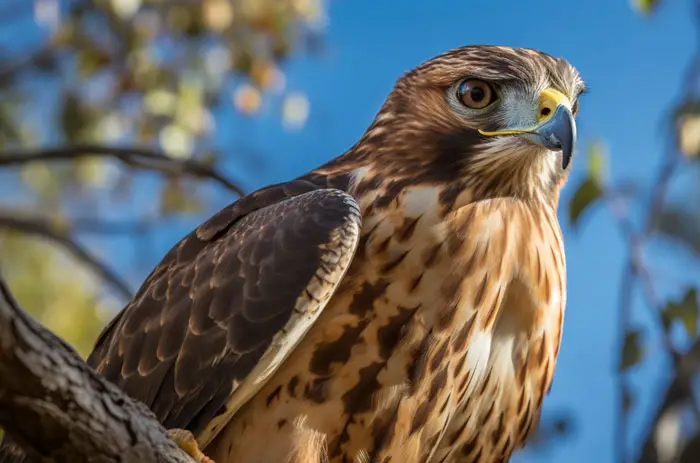
Below are some tips on protecting yourself from a potential hawk attack.
- Stay alert: If you are in an area frequented by hawks, stay alert and aware of your surroundings. Be aware of any signs of a hawk’s presence, such as its wings flapping or its call.
- Avoid provoking the Hawks: Hawks can become aggressive if they feel threatened. To avoid provoking a hawk, do not make direct eye contact, and do not make sudden movements.
- Keep your distance: Maintaining a safe distance from hawks is essential, especially if they are nesting. Hawks are territorial and may become aggressive if they feel their nest is threatened. Stay at least 300 feet away from hawk nests.
- Use an umbrella or stick: If you are surprised by a hawk, holding up an umbrella or a stick makes you look larger and more intimidating. This can deter the hawk from attacking. By the way, you may not always have an umbrella. So, this isn’t an instant solution at all.
- Keep your pets on a leash: Hawks may mistake small pets for prey and attack them. Keep your pets on a leash and within sight at all times.
Here are other suggestions on how to protect yourself from a hawk attack.
Recommended Safety Gear For Bird-Watchers And Hikers
You must invest in appropriate safety gear as a bird watcher and hiker to protect yourself from potential bird attacks. The following gear is recommended to safeguard you from an attacking hawk.
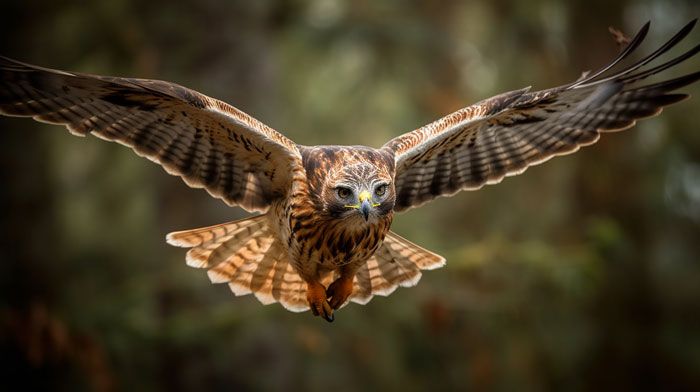
- A hat to protect your head
- A sturdy pair of hiking boots
- A jacket with a hood to protect your head and face from talons
- Sunglasses to protect your eyes from a hawk’s sharp claws and reduce sun glare.
How To React When A Hawk Is Nearby?
If you see a hawk in the area, keep your distance and avoid sudden movements that may startle or provoke the bird. It is also critical to avoid making direct eye contact with the hawk, as this may be perceived as a threat.
If you have small pets with you, keep them on a leash and avoid letting them wander into the hawk’s territory.
Understanding Hawk Behavior
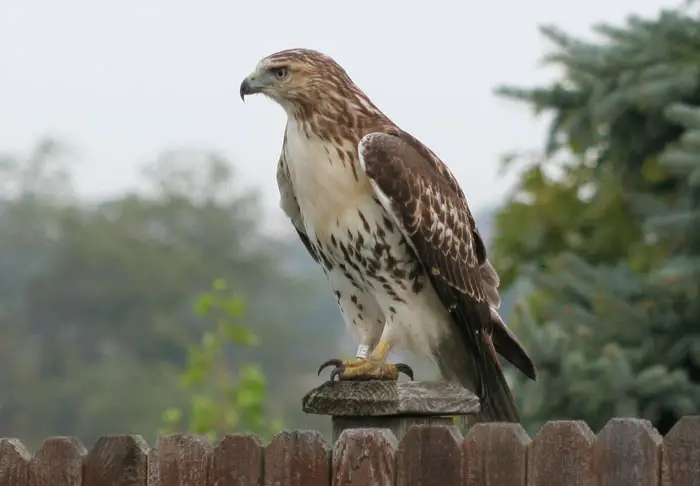
Different types of hawks have unique behavioral patterns related to hunting, nesting, and territorial behavior.
Hunting
Larger species, such as the Red-tailed and Ferruginous hawks, are known for their aerial hunting abilities. These hawks fly high in the sky to spot their prey from a distance, then swoop down at high speeds to catch it.
Smaller hawks, such as the Sharp-shinned hawk and Cooper’s hawk, use a technique known as “still-hunting.” They perch on a branch or other elevated surface and wait for their prey to pass by.
When they spot their prey, they quickly fly towards it, using their agile bodies to maneuver around obstacles and catch them off-guard.
Northern Harriers use a unique hunting technique known as “quartering.” They fly low over open areas, such as fields or meadows, and use their keen senses of hearing to locate their prey.
Nesting
Hawks, irrespective of species, build nests in trees, cliffs, or other elevated locations. Both male and female hawks are involved in building and maintaining the nest.
Territorial Behavior
Hawks are highly territorial and fiercely defend their territory against any perceived threat. This behavior is particularly evident during the nesting season when hawks are more aggressive in defending their nests.
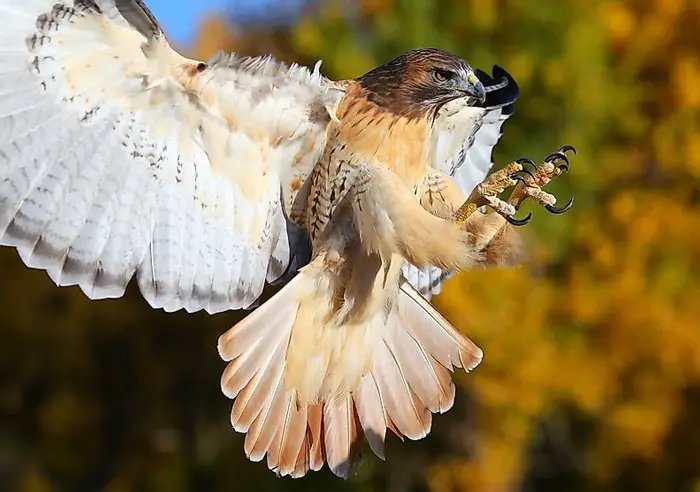
They use vocalizations and physical displays to communicate their territorial boundaries to other hawks.
Factors That Influence Hawk Behavior
Understanding these factors is essential for anyone interested in studying or observing hawks in the wild.
Environmental Factors
Hawks may change their hunting patterns in response to weather conditions like wind or rain. They may also alter their territories or nesting habits in response to changes in their habitat, such as deforestation or urbanization.
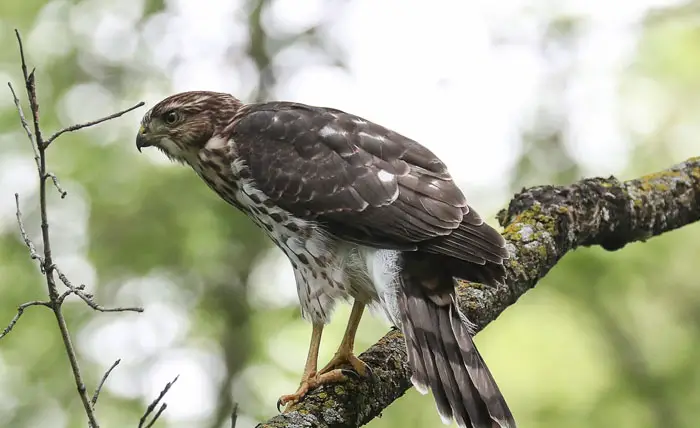
Food Availability
Hawks are carnivores, and their behavior is influenced heavily by food availability. Hawks may become more active and spend more time hunting if the prey is abundant.
In the absence of prey, hawks may become less active and spend more time resting or conserving energy. Changes in prey populations can also influence hawk behavior. If a hawk’s preferred prey becomes scarce, it may shift to hunting a different type of prey.
Human Activity
Human activity can also have a significant impact on hawk behavior. Human disturbance of nesting sites can result in the abandonment of a nest.
Other factors influencing hawk behavior include predators, disease, and social interactions with other hawks. Predators such as owls and eagles can threaten hawks and influence their behavior. Conditions such as the West Nile virus can also affect hawk behavior by reducing their ability to hunt or causing them to become disoriented.
Signs That A Hawk May Be Agitated Or Preparing To Attack
Here are some signs that a hawk may be agitated or preparing to attack:
- Vocalizations: Hawks may make vocalizations such as screeches or screams when they feel threatened or agitated.
- Flight behavior: Hawks may fly in circles around a perceived threat. Sometimes they may dive or swoop toward the perceived threat. This is a warning sign that the hawk feels threatened and may attack if the perceived threat gets too close.
- Defensive postures: Hawks may puff up their feathers, extend their wings, and hold their talons in a ready position when they feel threatened.
- Starring: Hawks may stare intently at a perceived threat, sometimes with open beaks.
- Aggression: Hawks may attack other birds that they perceive as a threat to their territory or young. If you see a hawk attacking another bird, it may be a sign that the hawk is feeling agitated or defensive.
What To Do If You Encounter A Hawk?
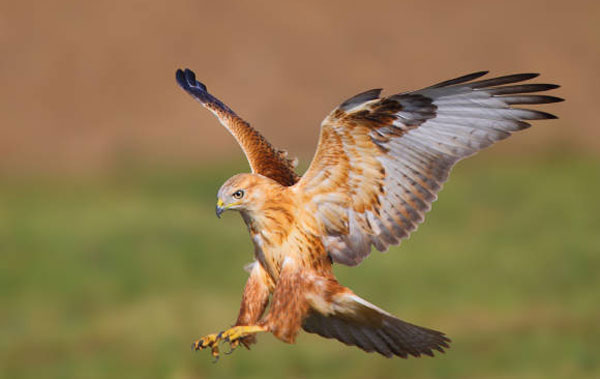
Here are some recommended actions to take when a hawk is nearby:
- Give the hawk space: Avoid approaching the hawk or attempting to handle it.
- Do not provoke the hawk: Avoid sudden movements or loud noises that may startle or cause the hawk to attack. If the hawk feels threatened, it may become agitated and defensive.
- Note the bird’s location: Provide this information to the wildlife expert and try to be as specific as possible, including landmarks or nearby streets.
- Take pictures or videos: Provide these to the wildlife expert to help them assess the bird’s condition and determine the best course of action.
- Contact a local wildlife expert: Contact hawk rehabilitation centers or a licensed wildlife rehabilitator as soon as possible. They can advise on how to proceed and may be able to come and collect the bird for treatment.
Several resources are available to learn more about hawk behavior and safety; local wildlife organizations, such as Audubon societies or bird-watching clubs, may offer educational resources and guided tours. Online resources, such as the Cornell Lab of Ornithology, provide information on bird behavior patterns and hawk identification.
Laws And Regulations Related To Harming Or Killing Hawks
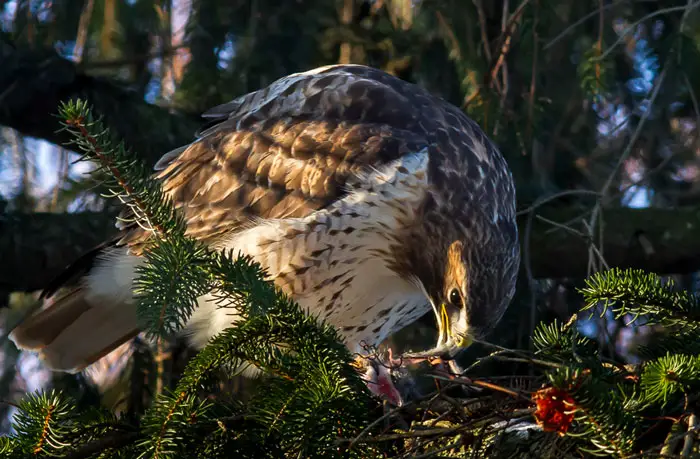
There are several laws on harming or killing hawks in the United States. They include the Migratory Bird Treaty Act (MBTA) and the Endangered Species Act (ESA).
- Migratory Bird Treaty Act (MBTA): The MBTA protects all migratory birds, including hawks, from being killed, captured, or sold without proper permits. This law also prohibits the destruction of their nests and eggs. Penalties for violating the MBTA include fines of up to $15,000 and imprisonment for at least six months for each violation.
- Endangered Species Act (ESA): Hawks are a protected species under the Endangered Species Act. This law makes it illegal to harm or kill them without a permit. The ESA imposes harsher penalties, with fines of up to $100,000 and imprisonment for at least one year for each violation.
There are exceptions to the laws related to hawks, such as when they pose a threat to public safety or when they are causing property damage. In the United States, hawks may be killed with a permit if they attack livestock or poultry. Similarly, permits may be obtained for scientific research or educational purposes.
If you come across an injured or sick hawk, it is essential to contact a licensed wildlife rehabilitation center. These centers have the expertise and resources to care for wounded hawks and release them back into the wild once they are healthy.
Many of these centers rely on donations and volunteers to continue their work. At the same time, they may offer educational programs on hawk conservation and wildlife safety.
Conclusion
Understanding hawk behavior and safety is critical for both humans and hawks. We can reduce the risk of injury or distress to ourselves and the birds by learning how to interact with these birds of prey safely and respectfully. Remember, hawks only attack when they are protecting their young or when you step into their territory.
Report injured or distressed hawks to the appropriate authorities, and avoid provoking these birds with sudden movements or loud noises. By following these simple guidelines, we can enjoy the beauty and majesty of hawks while preserving their natural habitat and way of life.
Further research into hawk behavior and safety can offer valuable insights into these magnificent birds. This will help us to understand their role in the ecosystem and how we can best protect them for future generations. Through continued education and awareness, we can work towards a future where humans and hawks can coexist harmoniously, respecting each other’s needs and boundaries.
